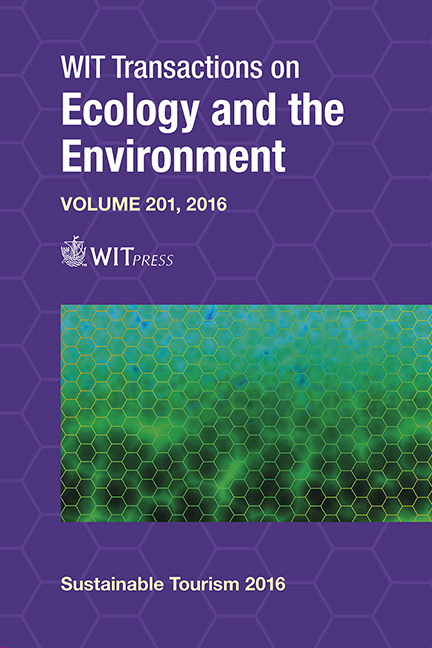Tourist Mobility At Coastal Mass Destinations: Implications For Sustainability
Price
Free (open access)
Transaction
Volume
201
Pages
11
Page Range
127 - 137
Published
2016
Size
1,061 kb
Paper DOI
10.2495/ST160111
Copyright
WIT Press
Author(s)
J. A. Ivars, M. A. Celdrán, A. Triviño, J. F. Vera-Rebollo
Abstract
The aim of this paper is to analyse the spatial behaviour of mass tourism demand in coastal destinations and its implications from the point of view of sustainable tourism development. The paper is based on primary research carried out in one of the main Mediterranean tourist destinations, Benidorm (Spain). This research involved the use of Global Positioning Systems (GPS) devices for the tracking of a sample of 257 tourists (from Spain and United Kingdom). Although the research has an experimental basis, these advanced technologies allow new approaches to spatial analysis in order to achieve a better understanding of tourist mobility at coastal destinations. Until now, most studies of intradestination movements have been applied to urban and cultural destinations, where the points of interest and tourist routes are easily identifiable. However, spatial behaviour of mass tourism in coastal destinations has rarely been studied in detail using new tracking technologies. While tourist movements may seem, a priori, predictable, the identification of mobility patterns offers interesting results about the main characteristics of the tourist experience, the relationship with the urban model, the use of public and private spaces, the perception of the destination, and the differences between segments of demand. The conclusions of the study are relevant from the methodological and theoretical point of view, and include some recommendations for planning and destination management in the context of sustainability.
Keywords
tourist mobility, mass destination, spatial behaviour, sustainability, GPS, tracking tourist





